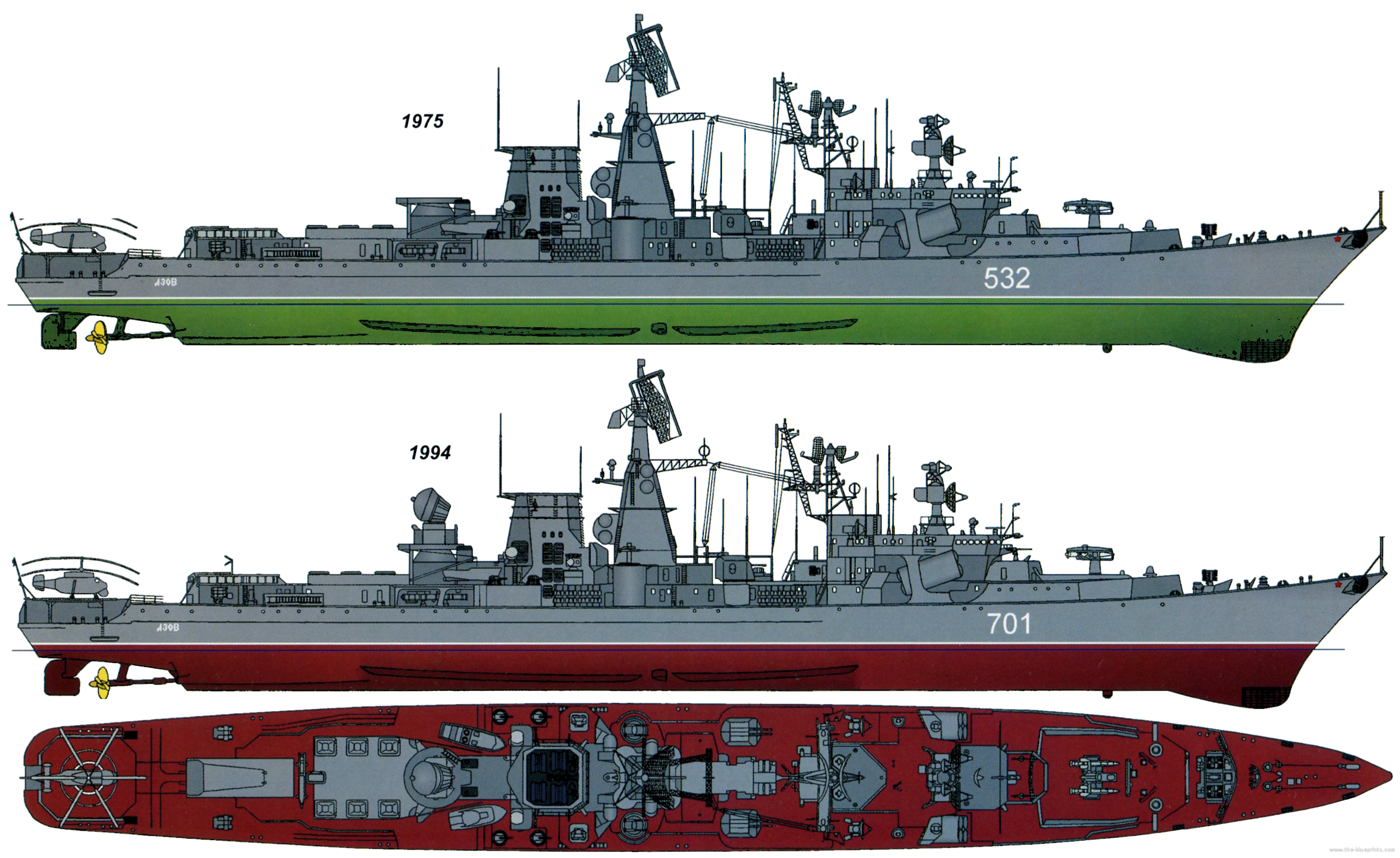
USSR Project 1134B Nikolayev 1972 Berkut B Kara class
Cruiser
USSR Project 1134BF Berkut B Azov Kara-class Cruiser
Being the Cold War opponent of the United States, the
Soviets continued to construct cruisers that could function as antiaircraft,
ASW, and as surface combatants to destroy NATO aircraft carriers. Between 1970
and 1978, 10 Kresta II-class cruisers, essentially a variant of the preceding
class that emphasized ASW, were completed. Another seven vessels of the
Kara-class were completed between 1973 and 1980, also designed primarily for
ASW.
The Karas are enlarged gas-turbine powered versions of the
Kresta IIs. The extra size has been used to mount two retractable SA-N-4 SAM
twin launchers, and the heavy anti-aircraft armament has been increased in
calibre. The Karas could be distinguished from the Kresta IIs by their longer
hull and the large separate funnel necessitated by the use of gas turbines.
Compared with their contemporary American cruisers, the Soviet ships are much
more heavily-armed, but the long-range American ships have large and very
seaworthy hulls.
The Kara measured 570 feet by 60 feet, displaced 8,200 tons,
and could achieve a maximum speed of 34 knots through the use of its
gasoline-fueled turbine engines. The Kara and the other ships of the class were
the first cruisers in the world to use this type of propulsion. The need for
boilers to produce steam is obviated, as engines consume gasoline that was fed
directly into the engine. In addition to this propulsion, radar, sonar, and
missile systems were much improved. The Kresta II- and Kara-classes owed their
existence to the extreme threat that the Soviets attached to Western ballistic
missile submarines, which could launch nuclear weapons into the heartland of
the Soviet Union. The Kresta II Class, Soviet Designation Project 1134A, Berkut
A (golden eagle) were Soviet guided missile cruisers of the Cold War. The ships
entered service in the late 1960s and were rapidly decommissioned after the end
of the Cold War
Kerch was laid down in the Soviet Union on 30 April 1971,
launched on 21 July 1972 and was commissioned in the Soviet Black Sea Fleet on
25 December 1974. The ship was constructed in the 61 Kommunar Shipyard at
Nikolayev (Mykolaiv) on the Black Sea. She was in service with the Soviet Fleet
until 1991, and then joined its successor, Russian Navy. As of 2011 she is the
last active Kara-class cruiser. The ship is slated to remain in service till
2019
Units: Nikolayev, Ochakov, Kerch, Azov, Petropavlovsk,
Tashkent, Tallin
Type and Significance: Large Anti-Submarine Ships. These
were some of the more successful cruisers of the Soviet Navy.
Dates of Construction: The units were laid down between 1969
and 1976, with the last one being completed in 1980.
Hull Dimensions: 570′ x 60′ x 20′ 4″
Displacement: 8,200 tons
Armor: None
Armament: Two SS-N-14 ASW launchers, two SA-N-3 SAM
launchers, two SA-N-4 SAM launchers, four 3-inch guns, four 30mm Gatling guns,
10 20.8-inch torpedo tubes, two RBU-6000 ASW systems, two RBU-1000 ASW systems,
and one helicopter.
Machinery: Four gas turbines that generated 12,000
horsepower.
Speed: 34 knots
Complement: 520